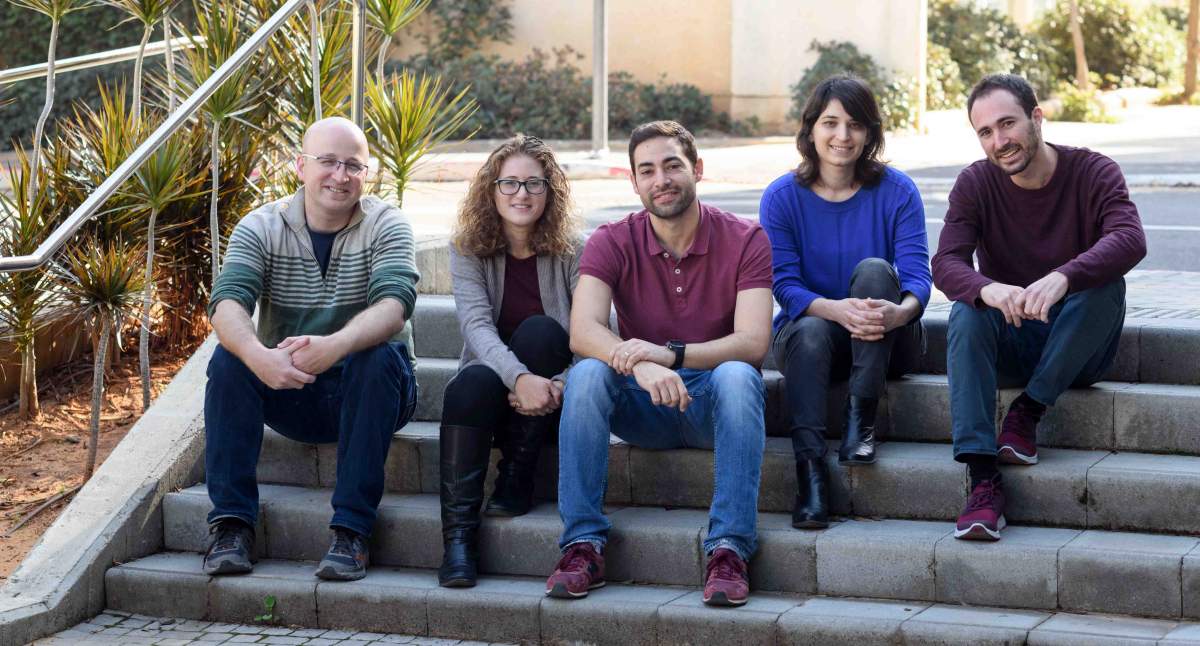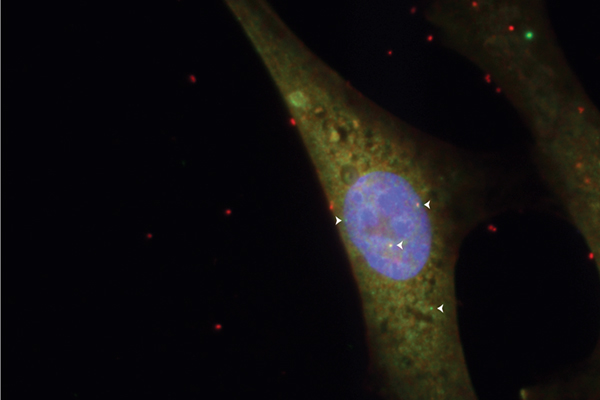Are you a journalist? Please sign up here for our press releases
Subscribe to our monthly newsletter:

We can learn a great deal about total strangers just by knowing where they spend their time. Researchers at the Weizmann Institute of Science have applied this idea to shedding new light on parts of the human genome – more specifically, on lncRNAs (pronounced link-RNAs). Little is known about the function of the thousands of these long, “non-coding” stretches dispersed throughout the human genome, but the Weizmann scientists thought that their whereabouts could provide a clue: lncRNA genes tend to be located in DNA regions involved in controlling the manufacture of proteins, thus the researchers suggested that lncRNAs might play a part in overseeing this manufacture.
In a study reported in Nature Communications, Dr. Igor Ulitsky of the Biological Regulation Department and his team focused on an lncRNA gene they called Chaserr, assuming that this gene plays an important role in the genome because it has been conserved in evolution from fish to humans. Chaserr sits in the genome near the beginning of another gene, Chd2, which regulates transcription, the process in which the DNA message is transcribed for the subsequent manufacture of proteins. Mutations in the Chd2 gene have been found in some people with autism and epilepsy, and they are thought to be at least partly responsible for these disorders. The researchers reasoned that because of the proximity of the two genes, Chaserr could be another layer of regulation on top of Chd2, fine-tuning processes necessary, among other things, for proper neurological function. If that is the case, it could provide a handle for developing future therapies to treat disorders associated with Chd2 mutations.

To clarify the function of Chaserr, Ulitsky and his colleagues first created transgenic mice lacking this gene. They found that these mice died shortly after birth or were severely retarded in growth, which showed that Chaserr’s role in the genome is indeed crucial. Further studies revealed that when Chaserr is eliminated, the expression of Chd2 rises sharply, suggesting that Chaserr puts a brake on Chd2, keeping the protein manufactured by Chd2 at proper levels.
Additional studies revealed how excessive levels of the protein produced by Chd2 caused problems in the mouse embryo. “Apparently, when the Chd2 gene is overly active, the abnormally large amounts of the protein it manufactures cause traffic jams of sorts at junctions with other genes, interfering with protein production in hundreds of different parts of the genome,” Ulitsky says.
The idea of “traffic jams” hints at how Chaserr carries out its function. It may act as part of a feedback loop, jamming the Chd2 gene when its protein levels rise above a certain level, as can happen, for example, when there are errors in various cellular processes or even during regular neuronal activity.
When the Chd2 gene is overly active, the abnormally large amounts of the protein it manufactures cause traffic jams
Reduced expression of Chd2 is no less problematic than its excess. In fact, that’s the defect caused by mutations identified in some of those suffering from epilepsy and autism. Only a small number of people with these disorders have the Chd2 mutation; in most cases, the underlying genetic cause is unknown, or it involves genes other than Chd2. But for those people in whom the problem is indeed insufficient Chd2 activity, a potential solution may one day come from the Weizmann study. A drug in the form of small molecules that neutralize Chaserr may help release its handle on the Chd2 gene, boosting its expression to proper levels and thereby correcting the underlying genetic defect.
The research team included Aviv Rom, Liliya Melamed, Noa Gil, Micah Jonathan Goldrich and Dr. Rotem Ben-Tov Perry of Biological Regulation Department, Matan Golan of Molecular Cell Biology Department and Dr. Inbal Biton of Veterinary Resources Department – all of the Weizmann Institute of Science; and Dr. Rotem Kadir of Ben-Gurion University of the Negev.
Dr. Igor Ulitsky's research is supported by the Sagol Institute for Longevity Research; the Willner Family Center for Vascular Biology; the Nella and Leon Benoziyo Center for Neurological Diseases; the Minna-James Heineman Stiftung; the Estate of Fannie Sherr; and the European Research Council. Dr. Ulitsky is the incumbent of the Sygnet Career Development Chair for Bioinformatics.